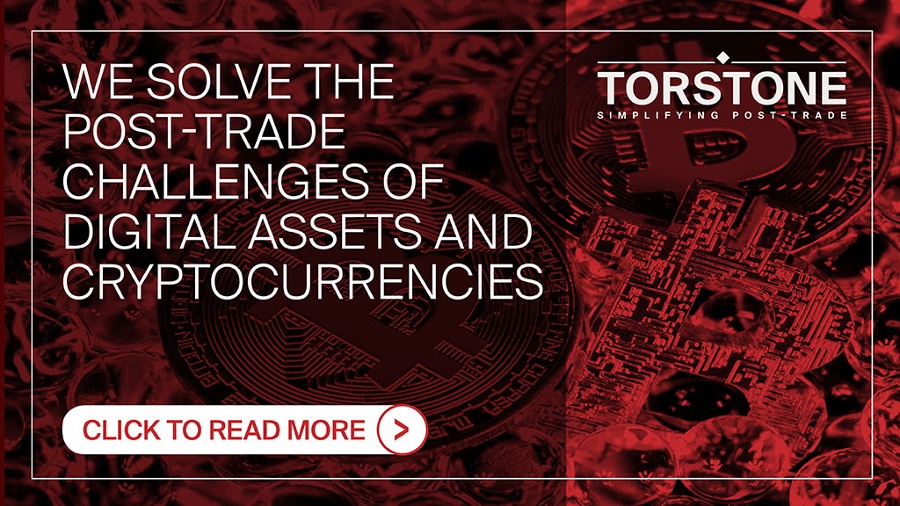
The nascent cryptocurrency and digital asset markets will test legacy back-office architectures to destruction.
The launch of new futures contracts on crypto assets, together with the public listing of trading venues, is institutionalising the use of these digital assets. Central banks are also exploring the launch of central bank digital currencies (CBDCs). The innovative part of cryptocurrency and digital assets is at their back end. Using a distributed ledger settlement process, as first developed with bitcoin's blockchain, creates a record of every transaction that is shared by all market participants protected by in-built cryptography.
That model makes the introduction of counterfeit currency and falsifying of transactions nearly impossible and is the real innovation that makes crypto assets unique.
Yet, for many capital markets firms, managing the trading of these new instruments, and the exchange-traded products/derivatives based on them, can be challenging on several levels.
Firstly, onboarding new asset classes require an understanding of their risk and reward profiles. For entirely new assets, this can be problematic. If an instrument uses alternative payment mechanisms, including rewards or tokens, these can be very hard to build into the system. Many digital assets do not have underlying fundamentals, which provide a driver for investment. Some have non-standard fundamentals, such as the increased issuance based on mining. Some are tied to real-world assets.
Given that many platforms have struggled to adapt themselves from one well-known asset class to another, moving beyond equities into fixed income, modelling digital assets into legacy back-office and risk platforms will prove even more challenging than non-digital assets.
Not only will the underlying digital assets have to be modelled, but these instruments are also likely to have futures and exchange-traded products (ETPs) which are built around them, and processing these products will need to track the underlying. Reporting rules for futures, options, and ETPs will apply to these products, and there will be a need for reporting to both customers and regulators.
Efficiency will demand that these reports be constructed in a single platform that can track performance and risk to deliver consistent profiling.
Secondly, if the instruments can be modelled, the cost and work involved will need to be multiplied many times over as new assets are developed. CBDCs will allow 'risk-free' assets to be held directly by banks that central banks authorise, but these are still under development. It is not possible to buy back-office platforms that can process them already; the systems will need to be as flexible as possible.
There is the potential for digital assets to present a very divergent set of post-trade processes – including connectivity to various distributed ledgers – which will need the relevant application programming interfaces (APIs) to be built in and connected. If back-office systems are developed for dedicated digital assets – or even sets of them – they will still need to be maintained and licensed, creating multiple cost centres.
Trade reporting is likely to track the current regime, although it may require additional reporting for regulators or clients that are not connected to a distributed ledger. The nature of digital assets could lead to new reporting requirements, such as 'forks' in a ledger which may lead to decisions being made on which version of the asset to track.
Thirdly, just as investment in many digital assets is speculative, so are assessments of which assets will stay the course in the eyes of investors. Prices have been volatile, and the most highly priced cryptocurrencies have also seen the greatest shifts in confidence – based on market activity – creating uncertainty in any investment made to underpin them.
This creates a dilemma for banks. Early movers are already able to offer custody services to investors and trading firms using digital assets. The lack of custody had been a major barrier to institutional investor engagement as assets had to be held on trading desks, creating risks around access to assets, security and trading workflows.
There will undoubtedly be demand when CBDCs are more fully realised. Therefore back offices need to ensure their technology architecture is able to process these assets effectively and with minimal disruption to existing operations.
The most efficient way of achieving this will be to engage with back office platforms that are adaptable, modular, and modern technology design principles.
Systems that have been developed to be instrument agnostic can deliver post-trade processing of digital assets without a patchwork of adaptations needed to repurpose them. They can model instruments based on the asset itself – rather than its proximity to equity.
A modular design allows new instruments to be added either within an existing module or within a new module that can be added or removed as necessary without impacting the rest of the platforms and with considerably less cost and work involved.
The design itself can be developed using agile methodologies, which allow an iterative development to meet the user's needs throughout the process, changing requirements should the situation change.
The real barrier to supporting clients in their use of digital assets will be rigidity in the back office. If legacy systems are so embedded that they may not be changed – or are too expensive to adapt – they will prove to be far more costly than their cap-ex, by adding opportunity cost.
With unknown reporting requirements ahead, which may reflect the different transactional infrastructures, banks will need to future-proof their technology and operations without speculatively spending on multiple systems. Firms that are unable to adapt their existing technology will need to review how IT underpins their operations and look at replacing legacy analogue tools at the earliest opportunity.





